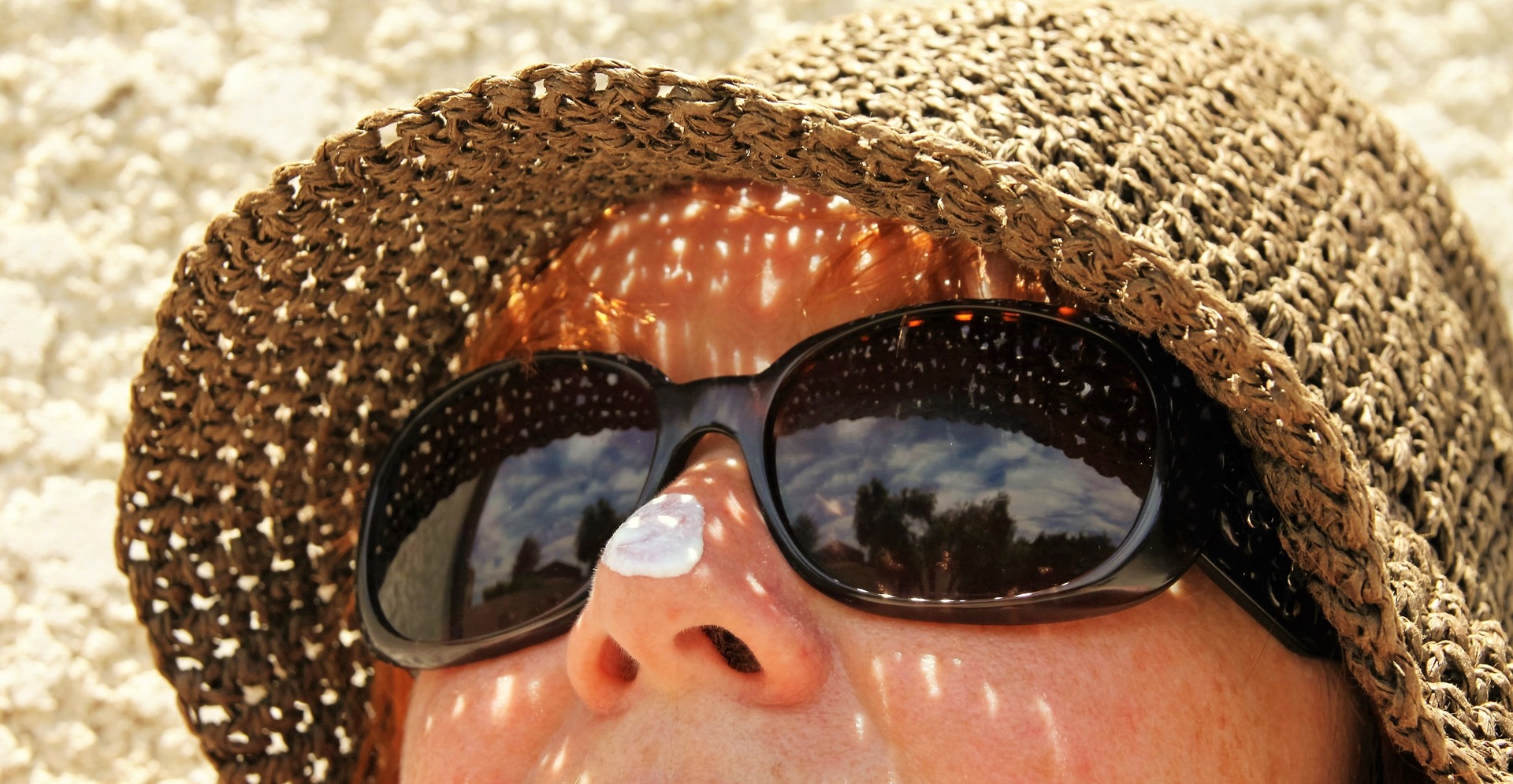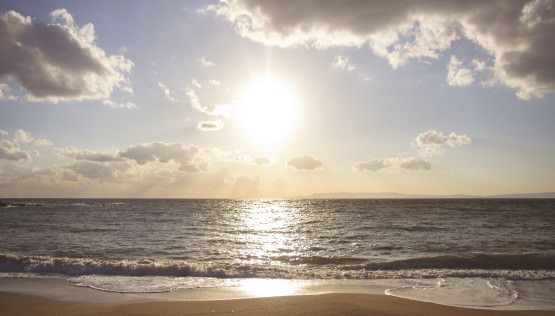
A comprehensive safe sunscreen guide to the different types of sunscreen and how each work differently to block the sun’s rays
Sunscreen is supposed to protect us from the sun, but as more and more people use it, the incidence of skin cancer rises 4% every year. Let that sink in for a moment.
More sunscreen use, more skin cancer. Something’s not right. Where’s the safe sunscreen? We wanted to know too, so we did some research…
You may wonder if an aging population has something to do with it. Surely, but Americans aged 65 and older as a percent of our population is rising by only about 1.5% per year. That’s not nearly enough to account for the skin cancer increase. Maybe global warming? And some say more skin cancer is reported more often than before. But after all attempts to account for the problem, the fact remains. We buy sunscreen to protect us from the sun, and it’s not doing its job.
So why not? The answer has to do with what’s actually in the sunscreens. And it happens that the sunscreens most people use have some pretty nasty toxins and chemicals in them. Look at the ingredients of almost any well known sunscreen brand, and you’ll find some pretty bad stuff. Collectively, these do a decent job at preventing sunburn, but actually do more harm than good in stopping deep tissue damage, the kind that causes long term harm like premature skin aging and skin cancer.
Sunscreen Types
There are two basic types of sunscreens — chemical and physical. Each work differently to block the sun’s rays.
Chemical Sunscreens
Chemical sunscreens protect skin by absorbing the sun’s rays. They do this by seeping into your skin. This is why chemical sunscreens apply smoothly, without leaving a thick film and include active ingredients such as oxybenzone. The problem is that many of the chemical sunscreen active ingredients disrupt endocrine and hormone activity, and what may be worse, they actually encourage UVA damage, deeper in the skin. In short, chemical sunscreens protect the skin surface from the temporary discomfort of sunburn, but they’re simply passing the problem deeper, where we don’t notice it until years later when the dermatologist starts diagnosing serious skin problems.
Physical Sunscreens
Then there’s physical sunscreen. This utilizes minerals zinc oxide or titanium dioxide as active ingredients, which sit on top of the skin and physically block the sun’s rays. They work immediately and do not seep into the skin. Zinc oxide is very protective against both UVA and UVB rays, unlike most chemical sunscreens, which are only effective against one or the other. Zinc oxide is also the sole sunscreen-active ingredient that’s FDA approved for use on infants.
The key drawback to physical sunscreens is cosmetic — they sometimes leave a white film. But properly formulated physical sunscreen can be spread to a thinness that is fully protective while being practically transparent on the skin.
Environmental Considerations
 There are also environmental consequences to sunscreen usage. The active ingredients found in chemical sunscreens, frequently used at beaches and snorkeling, are toxic to aquatic and marine life.
There are also environmental consequences to sunscreen usage. The active ingredients found in chemical sunscreens, frequently used at beaches and snorkeling, are toxic to aquatic and marine life.
The manufacturers of chemical sunscreens don’t tell us this, but those chemicals leech from our skin into the water, where they harm, stress and even destroy coral reefs and other marine animals.
In contrast, physical safe sunscreen ingredients cause no ill effect on natural water environments.
Other Ways to Stay Safe in the Sun
The American Academy of Dermatology, while promoting the use of safe sunscreen, calls it just “one component of a daily photo-protection regimen.” We shouldn’t forget the other ways we can enjoy a sun-healthy lifestyle.
Shade & Sun Defense Clothing
 A simple way to reduce your sun exposure is to avoid the peak midday, sun hours. As the sun climbs higher in the sky, the sun rays become more intense. This is because the UV light travels a shorter, more direct distance to reach the Earth.
A simple way to reduce your sun exposure is to avoid the peak midday, sun hours. As the sun climbs higher in the sky, the sun rays become more intense. This is because the UV light travels a shorter, more direct distance to reach the Earth.
The peak sun intensity hours are between 10am and 3pm standard time or 11am and 4pm daylight savings time. By seeking shade during these hours, you can reduce your sun exposure as much as 60%.
Wearing sun-protective clothing and quality sunglasses is another easy and important way to stay protected in the sun. If you plan to spend lots of time outside, invest in sun hats, sun-protective clothes, and UV-blocking sunglasses.
Sun Defense Foods
Safe sunscreens, shade and protective clothing are important, and there’s another, less known type of sun defense tool. What rarely gets mentioned is the nutritional component to skin protection. It’s been shown that high levels of antioxidants allow our own skin to remove the free radicals caused by sun exposure. Since free radicals are what actually burns our skin and causes long term damage, this free radical removal acts as another completely valid form of sun defense.
Those who spend (or plan to spend) significant time in the sun should eat a diet heavy in antioxidants for 1-2 weeks or more before such sun-heavy activity. In fact, consistent daily intake of high antioxidant levels gives the body what it needs to neutralize up to 90% of sun-produced free radicals, delivering the equivalent of up to 10 SPF, completely independent of other sun defense methods.
Wear Safe Sunscreen
Skin cancer is the most common cancer in the US, with some estimates showing over 2 million Americans are diagnosed each year. So safer, more effective sun defense products are vital for to maintain our collective health.
We understand choosing a safe sunscreen can be confusing, and that’s why we created this guide — to help consumers make informed and safe choices before they head outdoors.
Know Your Sunscreen. Trust Your Sunscreen.
Next time you grab for your sunscreen, flip it over and actually read the ingredients, including the “inactive” ones. Do you know what all of them are and what they’re doing? We’re dedicated to using only the healthiest, safest, most effective ingredients in our sunscreens, and we want everyone to know what those good ingredients are, regardless of whether they use our products or not. Their skin is worth it.
If you know someone who might still be buying sunscreen with shady ingredients, please share the above info with them. It could have a serious impact on their life – in the sun, and out. Thanks for spreading the word to the ones you care about, and here’s to thriving in the sun.
Download this FREE printable Sunscreen Pocket Guide by Waxhead for more on how to select safe sunscreen – including ingredients to avoid and ingredients to look for in your sunscreen.
This article originally appeared on Waxhead Sun Defense.
Latest posts by Sun Safe Boating News (see all)
- Sun Safety Educational Materials for Kids - July 22, 2018
- Safe from the Sun Walk and 5K Run Event 2018 - April 30, 2018
- Here Comes the Sun – Safety Tips for Boaters - March 27, 2018
- Get Ready for a Sun Safe Season - March 16, 2018
- Are You Putting Safe Sunscreen on Your Skin? - February 21, 2018
